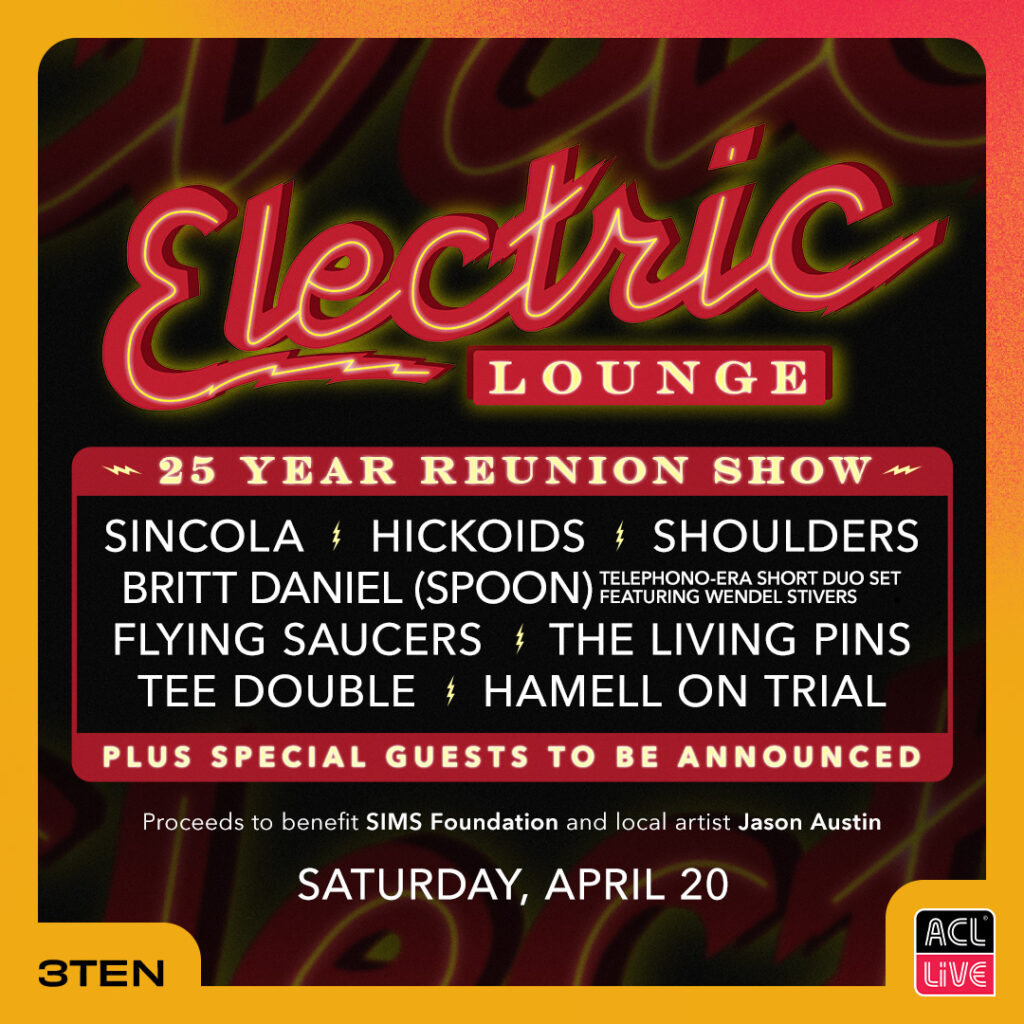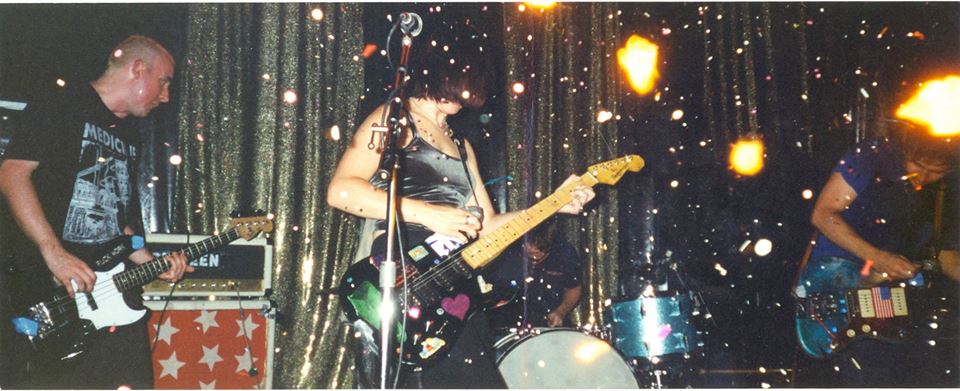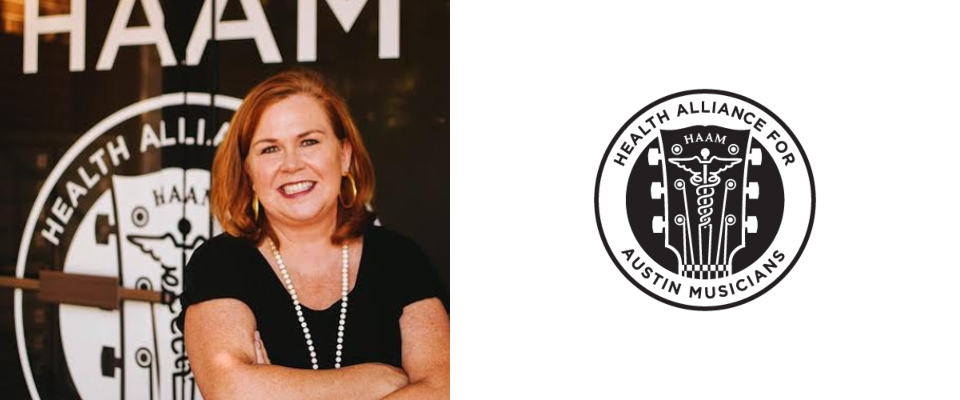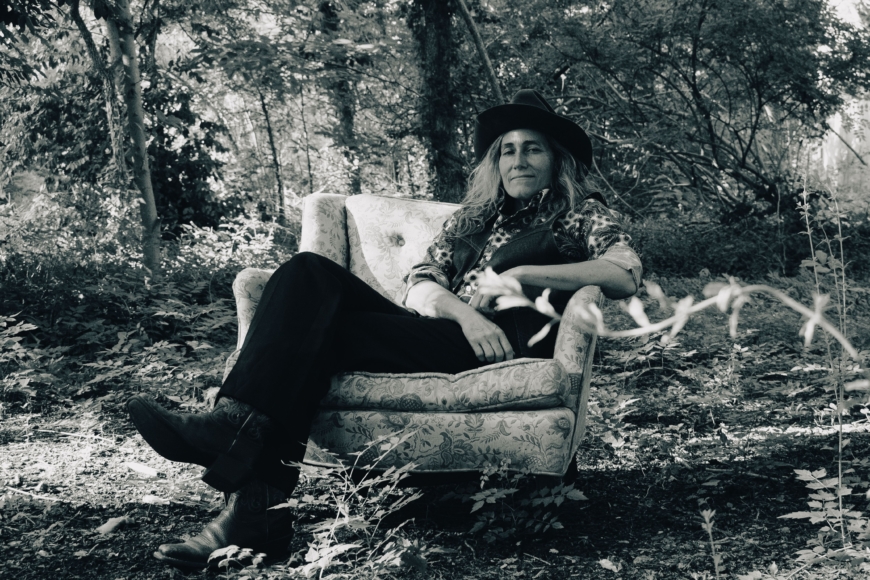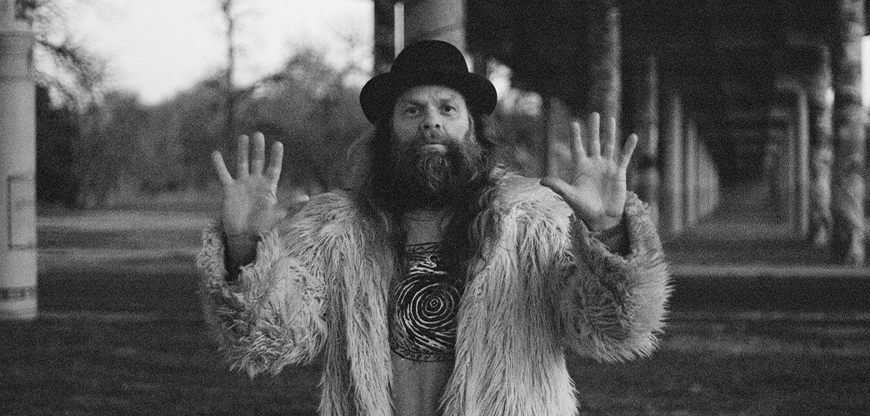Alums mark the 25th anniversary of the formative nightclub
By Jeff McCord
On a dead-end street in a neglected part of town sat a warehouse, sandwiched between used car lots and body shops. Nothing about it seemed significant, yet what went on inside these walls was transformative to the Austin music scene.
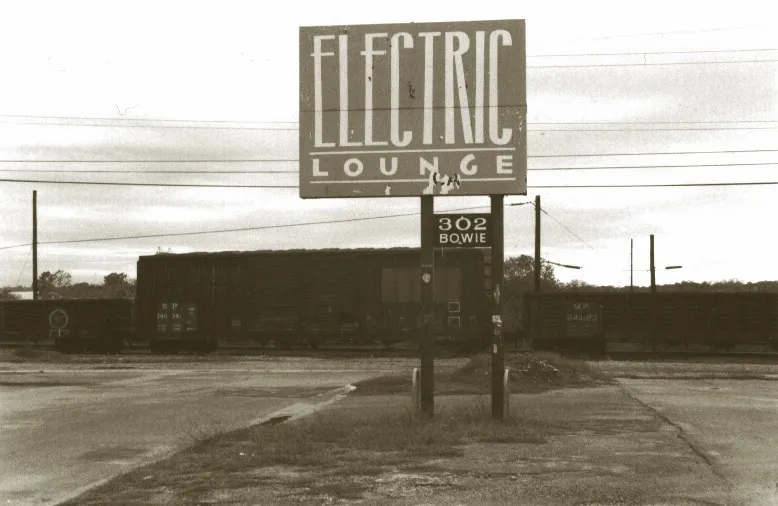
From 1993-1999, the Electric Lounge operated at 302 Bowie Street, and on Saturday April 20th at ACL LIVE at 3Ten, it will rise again. To mark the 25th anniversary of their closing, alums like Sincola, Britt Daniel, Flying Saucers, the Hickoids, Tee Double, Shoulders, and of course, Hamell on Trial, the artist who catapulted his residency there to major label success, will summon the spirits of that warehouse back to life. (The show is technically sold out, though some tickets may still be released. Watch the EL Facebook page or ACL LIVE social media for updates.)
It’s a testament to the incubative powers of the club that the lineup is completely different than their 20th reunion held five years earlier at the same venue.
“With the exception of Hamell, who’s our avatar. He would just appear on stage whether we booked him or not.”
That’s musician/poet/promoter Mike Henry, who booked the Lounge in their latter years.
The list of local talent that honed their craft inside these walls is impressive: Spoon, the Gourds, Sixteen Deluxe… Lucinda Williams spent multiple sold-out nights there woodshedding the songs that would end up on Car Wheels on a Gravel Road. And that doesn’t even mention the road shows. So many of them are etched in my memory.
I asked owner Mark Shuman, who opened the Lounge with architect Jay Hughey, if he had a proudest moment among the many bands who played their stage, bathed in the glow of the huge red ‘Electric’ sign.
“Obviously, for me, because I went on to do a documentary about them, it would be Morphine, which was our first really big show. But we had Joan Jett, Elliot Smith.. We had Vic Chesnutt, we had Daniel Johnston, we had Wesley Willis, all these underground artists that would come find a home at the Electric Lounge. ”
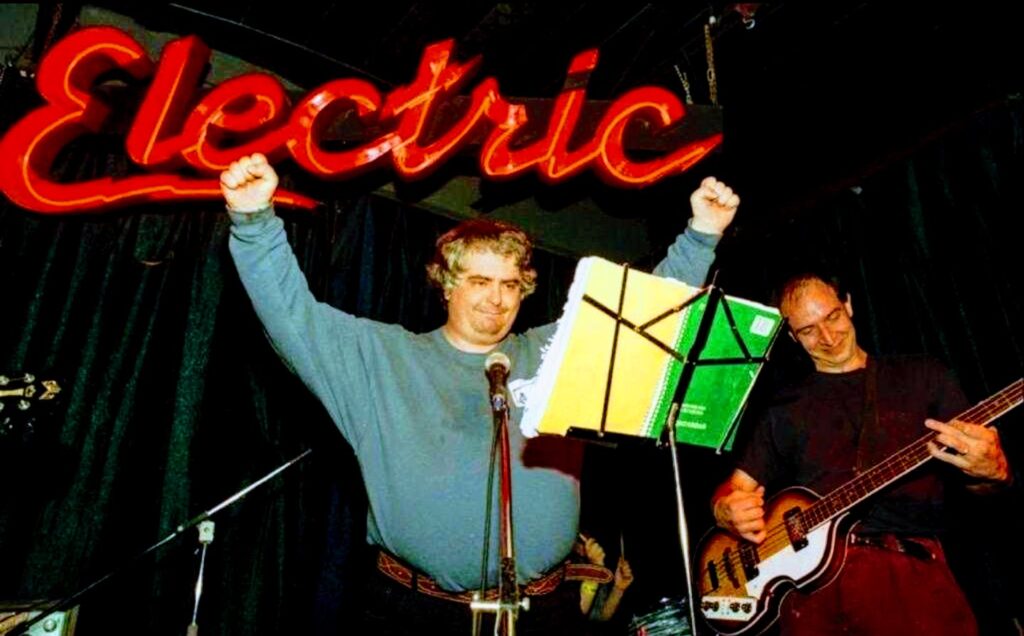
“Jeff Buckley, Sleater-Kinney, Mixmaster Mike, Jonathan Richman, Spiritualized,” Mike Henry adds in. “Just on and on. But that local scene, you know, Spoon played a lot of Tuesday nights, man, for quite a long time before they caught on.”
Britt Daniel recalls those days. “The Electric Lounge set up and right away became one of the places you just went to no matter who was playing. I spent a lot of nights there. It was a great hang and one of the first homes Spoon had. I think we were the last band to play on its stage.”
“I remember that night when Gourds played ‘Gin and Juice’ [the Snoop Dogg cover that became a live mainstay for them] as the encore, just fucking around, “ Henry recalls. “Kevin just said, ‘Just follow me’. They started playing it and didn’t know the end of the song. And they’re all just laughing their heads off because the place went ballistic. It went on for quite some time.”
Kevin Russell recalls the Gourds’ residency at the Lounge.
“On Tuesday nights, we often followed the blue-plate poets, Mike Henry’s slam poetry group. These were the days when our audience was mostly made up of friends. The crowds began to grow each week. Before long, they gave us a Saturday show. The band had heard me do the ‘Gin & Juice’ cover at a solo show the week before. We had an encore situation, so I told them to play A & D chords over and over, and that’s all it is. After that, we had our crowd. It was like magic. That led to gigs in Dallas and Houston for us. “
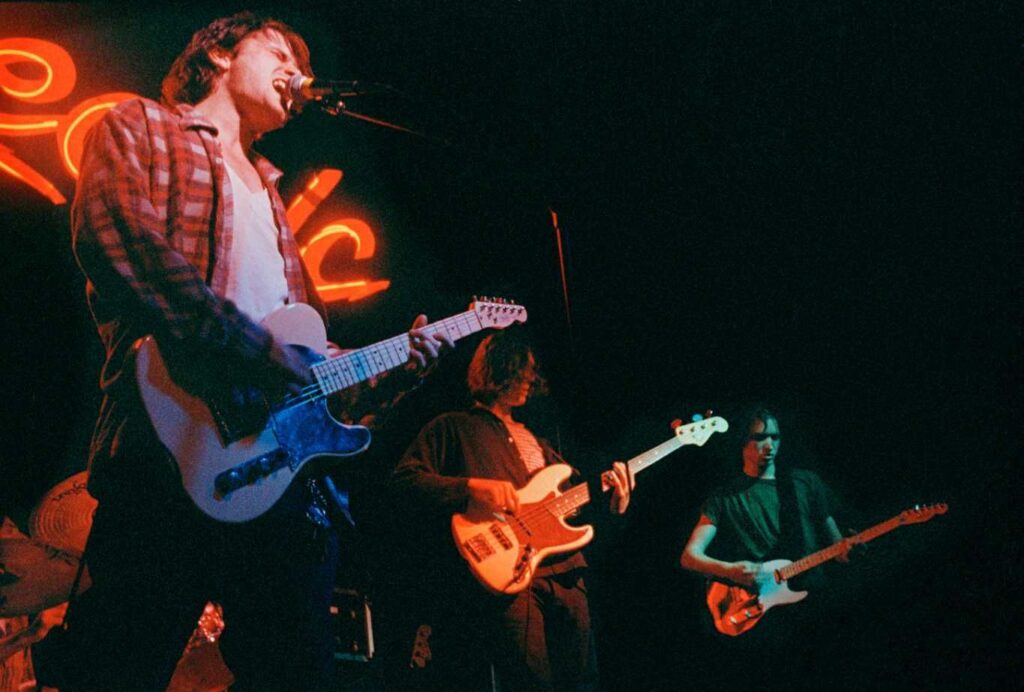
From the beginning, when Shuman and Hughey began looking for space, they had something different in mind.
“We were at the Black Cat Lounge one night,” Mark remembers. “I think it was during the week, there weren’t a lot of people there. The Black Cat was a great scene, I’m not dissing it, but we were looking at it and we just started talking about something where we could really bring diversity in. That was one of the things we strove for, to have a place where everybody was welcome. We had poets. We had painters. We had openings, we had movies we were showing for a while. So we just decided we were going to have this art kind of club where we’d have all types of entertainment.”
But first they had to find a building.
“We looked downtown,” Mark recalls. “We looked at the old bus station. There were a lot of spaces in Austin back then. It was a different city. Ultimately we rented a warehouse from an 82 year old man, a great guy named Eldon Hill. We did the finish out on the building ourselves. We paid for the entire interior. I always joked, never go into business with an architect because that was Jay. He was like, ‘Let’s make a round wall here.’ I didn’t know how hard a round wall was to build. But we got open, it took us about six months.”
“We weren’t really club owners or businessmen. And doing it more out of our hearts than for our wallets. And then, of course, we met Mike. We were painting the stage, and here comes Mike walking in with these big, thick glasses.”
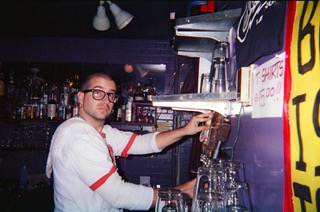
“I worked at the co-op bookstore,” Mike recalls, “and I did booking for local bands. I saw a story in the Chronicle about a new club opening up, and I got my stack of cassette tapes and headshots of the Wannabes and Cotton Mather and Black Irish and went down. That’s how you did it before the internet. We had no cell phones, there’s no website, nothing. You went down there and met the guys still building it. It was, you know, artistically from the very beginning, the club I’d always wanted. I started hanging out there so much, I ended up working there.”
Something you hear over and over again is the social aspect of the Lounge. Journalist and former Austinite Jason Cohen, who is travelling from Philadelphia to attend the reunion, says this: “It’s all interconnected… especially the older I get, you realize what was great about a music scene was the people and the community as much as the art they made. I don’t know if the EL was sui generis in that way, but when it was having its moment it was to its bands, and the people seeing those bands, the same thing that the Cannibal was, or The Beach was (I assume), or Beerland was, or some place that I haven’t been to presumably is now – I assume we are going to know half the people in the room.”
From the beginning, the Lounge was a magnet for fans and musicians alike. It was a place to network, socially and professionally.
“I got to see Hamell on Trial for the first time at the Austin Outhouse, my friend Chuck Lamb’s club,” Mark says. “And Chuck said ‘I love the guy. But that’s just not working for me here.’ And I said, ‘Well, if you don’t mind, I’m going to book him over here.’ So we booked him, and watched him go to a national level, then doing the shows at South by Southwest. We’d have a tent after the fire, SXSW and Brent Grulke helped us a lot with that. We set up this big tent. The first year we were just outside and then we did it every year after that. We had 1100 people outside and 450 in the club. It was a pretty cool time. A lot of work once again but a lot of fun.”
The fire. Ten months into their existence the interior was gutted. No one was sure if the Lounge would survive.
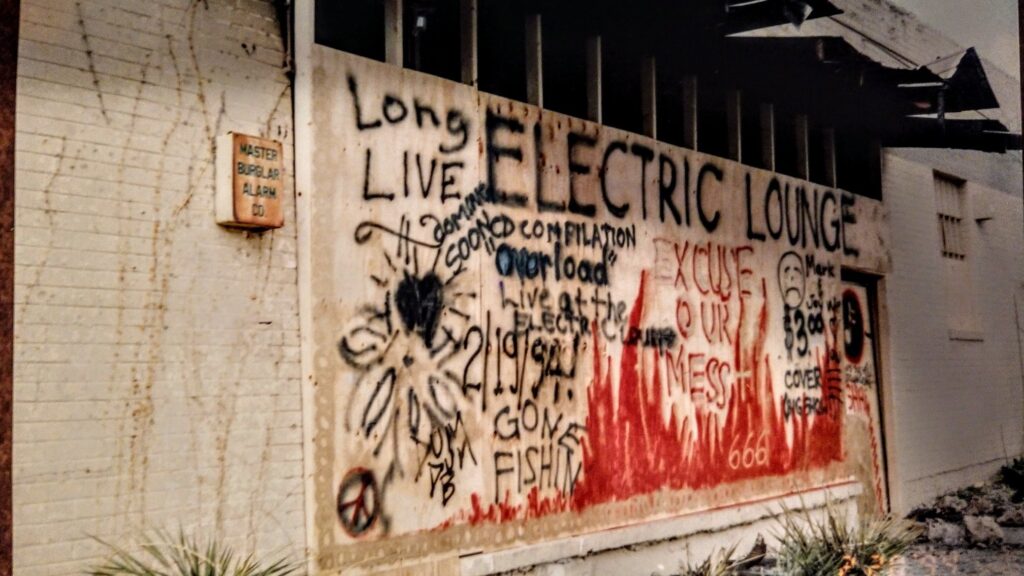
Ed Hamell recalls the time.
“I remember visiting the day after the devastating fire and Mark Shuman was shoveling ash and mud into giant trash cans. He asked me what I thought. I said ‘Well, if I was your accountant I’d tell you to pack up and call it a day. As your friend I’ll help you shovel some of this crap ‘ He responded without hesitation, ‘I’m not going to listen to my accountant for Chrissakes’ and handed me a shovel.”
As the Lounge’s ‘avatar’, Hamell’s memories of the club are similar to everyone’s, but also distinct.

“I was there quite a bit, I had a Friday night residency but I’d often come during the week just to hang out. It was a meeting place for the disenfranchised I guess, the square pegs in the round holes. But being at least ten years older than the typical demographic of the joint, and having experienced clubs like the Lounge and maybe more importantly the absence of clubs like the Lounge in all my gigging years, I was aware of how precious the place was. I was an out of towner but I was familiar with the reputation and legacies of clubs like The Armadillo or The Cannibal Club. When bands were complaining about not getting paid even though they only drew five people, I remember thinking, ‘When this club closes, where are you and your band, five guys dressed in grass skirts with a bagpipe and a buzzsaw going to play? Not on 6th street.’ So I never took the place for granted. There are historic artistic times, Paris and Germany in the 20’s, London in the 60’s, New York in the 70’s and I think of Austin in the 90’s, just post Seattle and grunge, as one of those times. And The Lounge unquestionably was the Moulin Rouge of that time. I consider myself lucky to have experienced it, and thankfully I was old enough to recognize its importance yet transient nature.”
Transience is inherent in the club business, and while the Lounge’s six years is a lot more than the blips on the radar of important trend-setters like Raul’s and Club Foot (both of which lasted only three years), it pales in comparison to OG survivors like the Continental Club and Antones.
The Lounge existed in a strange time for Austin. The city was not yet booming, yet there was a lot of club competition, including the newly opened Emo’s. The Lounge managed to stake a position both physically and conceptually apart. Then ‘progress’ started to arrive.

“When they started developing downtown for more density,” Mike recalls, “we were in a real undeveloped area, it was almost impossible to even get to the club after all that started.”
“We weren’t that much in debt, but we’d been doing it for six years,” Mark explains. “Jay [Hugey] had moved off to LA. We had some financial problems. We waited for the last South by Southwest to dig us out. We looked at it and if we kept going, we’re just going further in the hole. You know, we started getting bigger bonds from the state on our liquor license, and everything was just getting more expensive. We had a new landlord that was had quadrupled our rent. It was the changing Austin, the.com era had come on. And we had a mayor – who’s now our mayor again – who didn’t care about the live music. He was quoted as saying, ‘Clubs come and go.’ We’re in that same situation now. We were on record in those days saying, hey, smart growth has got to include these clubs. They’re starting to do it. They’re giving money to places like the Hole in the Wall and other clubs. They’ve got a fund now which is great. It’s wonderful that’s happening, you know, but there was no support for those things in those days.”
“That same year we went down,” Mike adds, “so did Steamboat and Liberty Lunch, all that same year.”
“The closing was frustrating,” Kevin Russell remebers. “That was an undeniable realization that the city had a mind of its own. Our little electric lounge bubble was invisible. That was the beginning of the end of innocence. A long, steel-and-glass transformation of our town that has not ceased.”
In the end, it’s never about just a building. It’s about a slice of time, the memories, the joys, the artistic heroics that linger long after the lights go dark. Shuman and Henry, both back in Austin after some time away, know this. So do all the musicians who made the Lounge so unique. The sad fact is, some clubs do come and go. But for a few hours on Saturday, the Electric Lounge will light up again.
